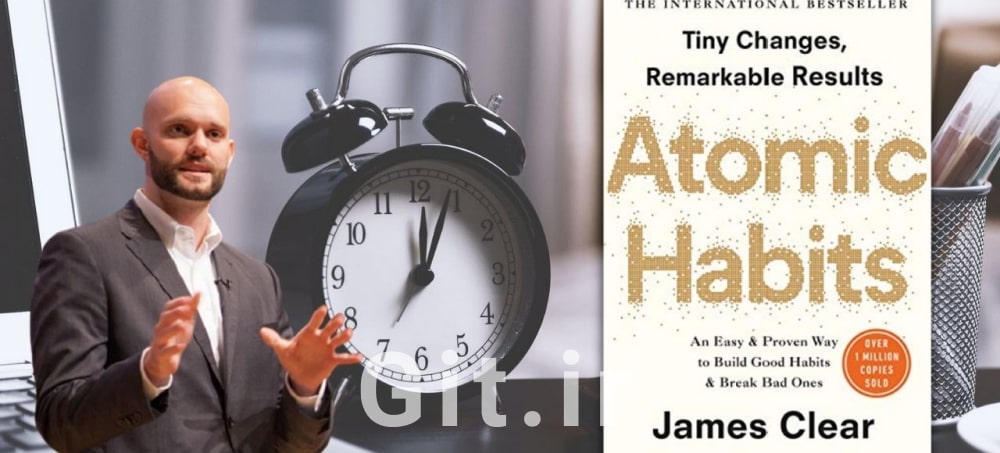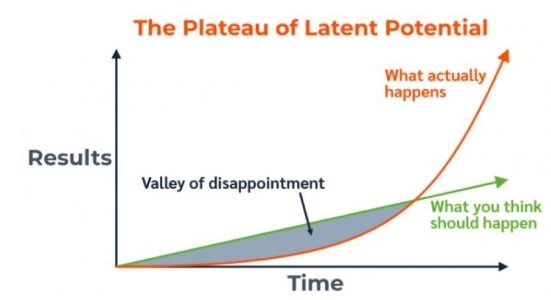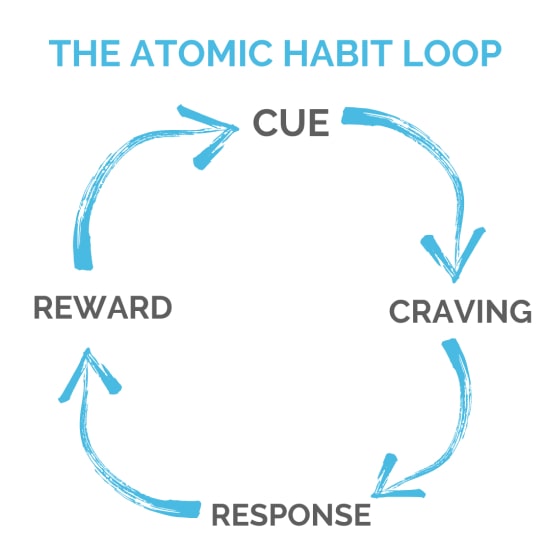Atomic Habits by James Clear | Book Summary

Transforming your life deeply and broadly may seem daunting and even impossible at first. However, by implementing small, consistent changes, we can ultimately achieve the goals we've always sought. The book "Atomic Habits," one of the best-selling personal development books, shows us how creating tiny habits can lead to significant changes in our lives.
Similar books that explore the topic of habits include "The Compound Effect" by Darren Hardy and "The Power of Habit" by Charles Duhigg.
Brief Introduction to the Book and the Author
In "Atomic Habits," James Clear illustrates how small, gradual changes can result in significant and transformative achievements. This book helps readers move towards their long-term goals by developing beneficial habits and offers scientific strategies for breaking bad ones.
In this article, we will explore the key lessons from "Atomic Habits":

1. The 1% Better Law
One of the keys to success in developing good habits is gradual improvement. The concept of being "1% better" demonstrates that even the smallest changes in daily habits can lead to profound transformations over time. James Clear emphasizes that if we improve just 1% each day, we can achieve a remarkable 365% improvement by the end of the year. These small changes can ultimately alter our destinies.
2. Systems Over Goals
Clear recommends focusing on systems rather than merely setting goals. Goals are the outcomes we want to achieve, but systems are the processes that guide us toward these results. If you struggle to change your negative habits, it's not about you; it's about the system you're in.
For example, if your goal is to lose weight but you lack a plan for regular exercise and healthy eating, you may find it challenging to reach your goal. By designing an effective system, achieving results becomes much easier.
3. Identity and Beliefs
Sustainable change occurs when we shift our identity and beliefs. Clear explains that to adopt new habits, we must believe that we are the type of person who can successfully implement those habits. If you change your mindset to see yourself as organized and successful, your behaviors will gradually reflect that change.
To cultivate sustainable habits, start by defining your identity. Ask yourself, "What kind of person do I want to be?" Then, gradually build this identity through small achievements.

4. The Habit Loop and Its Mechanism
Habits consist of four main stages: cue, craving, response, and reward. By understanding these four stages, you can better manage your habits and create positive changes.
Cue: The first step in forming or breaking a habit is identifying the cues that trigger your behavior.
Craving: Your desire for the outcome of the habit comes next.
Response: This is the action itself, such as smoking or running.
Reward: Finally, the reward you receive from the habit reinforces it.
5. How to Build Good Habits: Four Simple Steps
Now that we understand the structure of a habit and how it forms, let's examine how to develop positive habits based on the habit loop:
Cue: Make the Habit Obvious
To become aware of your current habits, write them down. This practice helps you identify which behaviors need change. Also, determine when and where specific behaviors should occur. Design your environment so that cues for positive habits are always visible, making it easier to embrace positive changes.
Craving: Make the Habit Attractive
Combine tasks you enjoy with those you need to do. This approach increases your desire for positive habits. Engage in a fun activity before starting challenging tasks to boost your motivation. Additionally, join groups where your desired habits are common; these connections can inspire and motivate you.
Response: Make the Habit Easy
Reduce the barriers to adopting new, positive habits as much as possible. Minimize the number of steps needed to perform a positive action. Arrange your environment so that desirable behaviors are easier to achieve. Remember, you don't have to perform the desired behavior continuously; even dedicating two minutes to it is a significant step toward improvement.
Reward: Make the Habit Satisfying
Consider an immediate reward for performing the desired behavior. These rewards create a sense of pleasure and encouragement. If you forget to engage in your desired behavior one day, do it as soon as possible and reward yourself. This practice strengthens your good habits and motivates you to continue your efforts.
🎧 Listen to the audio summary of "Atomic Habits"
6. How to Break Bad Habits
To break bad habits, you can apply the same habit loop. Here’s how to use this cycle to eliminate harmful habits:
Cue: Make Bad Habits Invisible
Remove or hide the cues that trigger you to engage in bad habits. A well-designed environment can significantly impact your ability to avoid undesirable behaviors. By reducing triggers, you can better focus on positive habits.
Craving: Don’t Make Bad Habits Attractive
Instead of drawing yourself toward negative habits, work on shifting your mindset. Reflect on the benefits of avoiding negative habits and how staying away from them can improve your life. When you realize the advantages of breaking a bad habit and the negative consequences it brings, your motivation for change will increase.
Response: Make Bad Habits Difficult
Increase the friction between yourself and negative habits as much as possible. By making it harder to engage in bad habits, you can steer clear of them. Use commitment devices to limit your choices and focus solely on positive and beneficial behaviors.
Reward: Eliminate the Satisfaction from Bad Habits
Ask a friend or partner to monitor your behaviors and remind you when you engage in negative habits. Additionally, create a contract with yourself that outlines penalties for each time you indulge in a negative habit. Share this contract with close friends or family to gain their support in your efforts.
7. Failure and Returning to the Path
Failure is a natural part of the habit change process. James Clear emphasizes that we shouldn't become discouraged by failures; instead, we should view them as opportunities for learning and improvement.
8. The Role of Environment
Your environment plays a crucial role in habit formation. Adjusting your surroundings to facilitate good habits while making bad ones more challenging is one of Clear’s key recommendations.
Conclusion
Our environment significantly influences our habits. Clear suggests that we should organize our surroundings to encourage good habits and hinder bad ones. "Atomic Habits" provides practical strategies and insights that help readers develop better habits in their lives and move closer to their goals.
Please Log in to leave a comment.